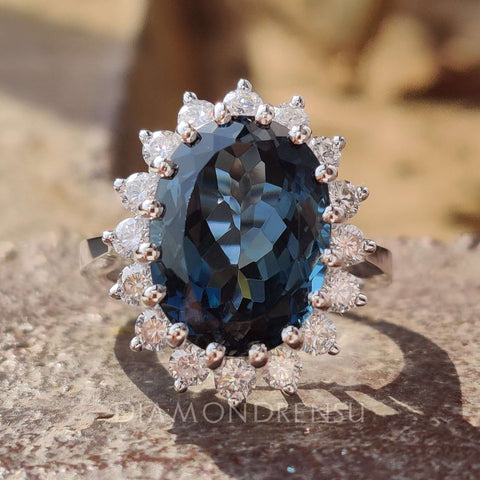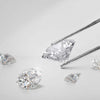
What Makes a Diamond Valuable? Unveiling the Secrets
Diamonds have long been admired for their brilliance and rarity, making them one of the most valuable gemstones in the world. Several factors contribute to a diamond's value; perhaps the most renowned of these is the four Cs—carat, cut, clarity, and color. The carat weight measures the size of the diamond, with larger stones generally being more valuable due to their scarcity. The cut of a diamond doesn't just refer to its shape but to how well the cutting has been executed, affecting the gem's symmetry, polish, and how it reflects light.
The clarity of a diamond describes the presence or absence of imperfections, known as inclusions and blemishes. Diamonds without these flaws are incredibly rare and thus highly prized. Color also plays a crucial role; diamonds with the least amount of color, or those that are colorless, are typically more valuable than those with noticeable color, unless the hue is particularly rare or desirable.
Beyond the four Cs, the value of diamonds is also influenced by market aspects, including historical, cultural, and economic factors. The tradition of diamonds as symbols of enduring love contributes significantly to their demand as centerpieces for engagement rings. Your understanding of what makes a diamond valuable is further enriched by examining how these stunning gems are formed and fashioned over time, as well as their role in various sociopolitical contexts.
Formation of Diamonds
As you explore the value of diamonds, it is essential to understand their unique formation process. Both natural and synthetic diamonds originate from carbon. However, the conditions under which they form are vastly different, influencing their rarity and value.
Natural Creation
Natural diamonds are born deep within the Earth's mantle. Here, carbon deposits are subjected to extreme high pressure and temperatures reaching above 2,200 degrees Fahrenheit. This intense environment over millions of years transforms carbon into crystallized real diamonds. Most diamonds that we find today were formed 1 to 3 billion years ago and are brought closer to the surface through volcanic eruptions.
The rarity of natural diamonds is directly tied to these scarce, specific geological conditions. Recent research on diamond formation reveals the diversity in their genesis, with some diamonds forming at even deeper parts of the Earth's mantle.
| Characteristic | Natural Diamonds | Synthetic Diamonds |
|---|---|---|
| Formation | Naturally formed deep within the Earth over millions of years. | Created in a controlled laboratory environment using technological processes. |
| Cost | Varies based on cut, carat, color, and clarity; generally perceived as more valuable. | Generally more affordable than natural diamonds. |
| Quality | Natural variations in quality; may have inclusions. | Can have fewer inclusions and may be of consistent quality. |
| Environmental Impact | Mined diamonds have environmental considerations. | May have a lower environmental impact compared to mining. |
| Certification | Certified based on natural origin. | Certified as lab-grown diamonds. |
| Market Acceptance | Traditional and widely accepted. | Gaining acceptance in the market. |
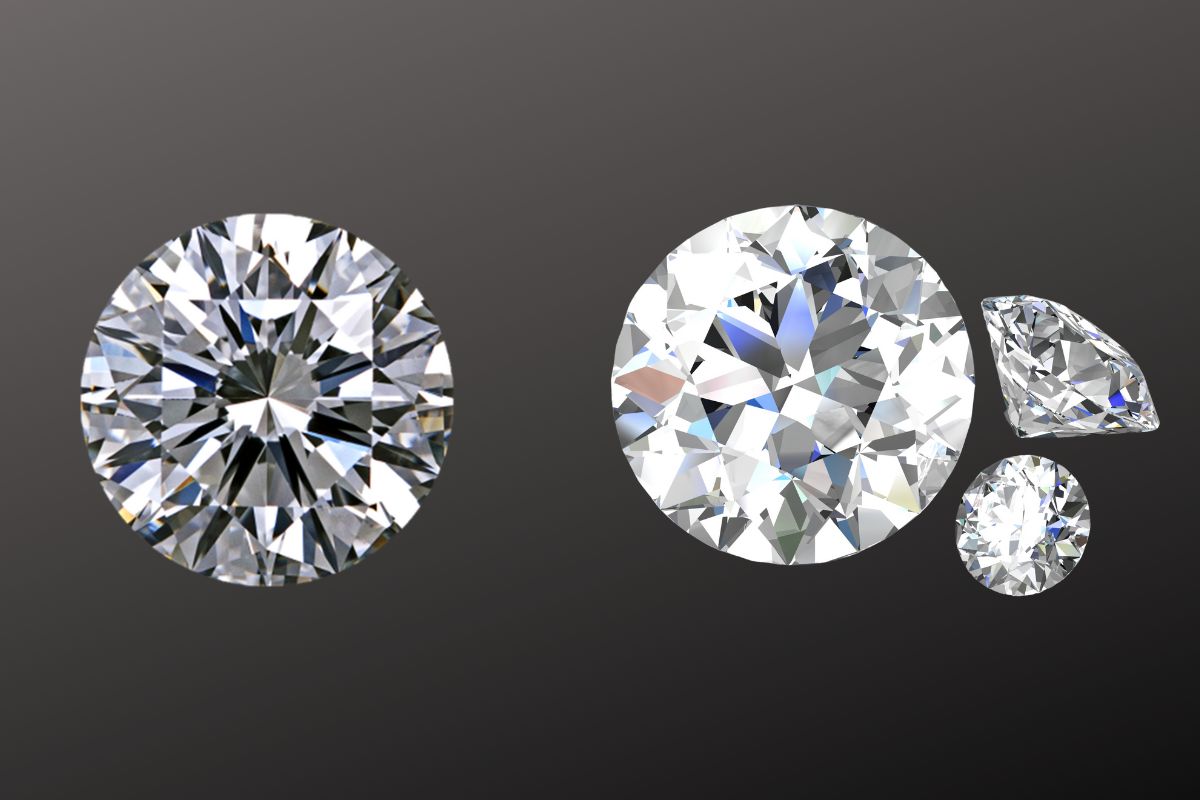
Synthetic Diamonds
Conversely, synthetic diamonds are engineered by humans replicating nature’s high pressure and high-temperature conditions in a laboratory. There are two primary methods for creating such diamonds: High Pressure High Temperature (HPHT) and Chemical Vapor Deposition (CVD).
- HPHT mimics the natural formation by subjecting carbon to high pressure and high temperatures.
- CVD involves breaking down molecules of a carbon-rich gas into plasma, which then deposits on a substrate to form a diamond.
The resulting synthetic diamonds possess physical, chemical, and optical characteristics similar to their natural counterparts. Although less rare than natural diamonds, synthetic variants have become increasingly popular due to their lower cost and ethical considerations. The process of creating synthetic diamonds has improved significantly, offering you stones that are almost indistinguishable from natural ones.
Diamond Characteristics
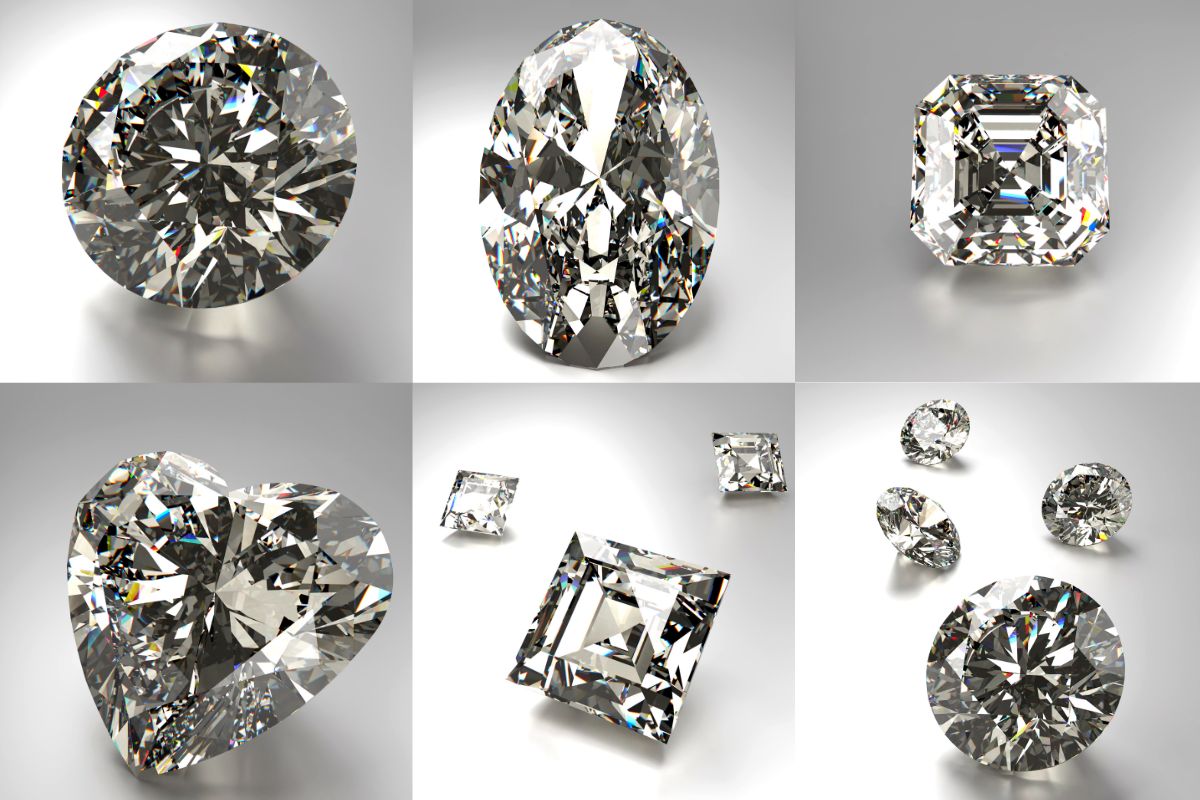
When you're determining the value of a diamond, five key factors come into play: size and carat weight, color and tone, clarity and inclusions, cut and proportion, and shape. Understanding these characteristics, collectively known as the 4Cs—Carat, Color, Clarity, and Cut—is essential in evaluating a diamond's quality and rarity.
Size and Carat Weight
The size of a diamond is often one of the first aspects you notice, but it's the carat weight that quantifies how much a diamond weighs. One carat is equivalent to 200 milligrams. Generally, the higher the carat weight, the more valuable the diamond, assuming all other characteristics are equal.
- E.g., A diamond that weighs 0.5 carats (100 mg) vs. one that weighs 2 carats (400 mg).
Color and Tone
The color of a diamond refers to how colorless or yellow it is. The Gemological Institute of America (GIA) grades diamond color on a scale from D (colorless) to Z (light yellow or brown). Colorless diamonds are highly prized and more valuable. The tone of the diamond complements the color, indicating the lightness or darkness of the color present.
- E.g., A D-grade diamond is more valuable than an H-grade diamond due to its colorlessness.
Clarity and Inclusions
Clarity indicates the absence of inclusions (internal flaws) and blemishes (external imperfections). A diamond's clarity rating can range from Flawless (no inclusions visible under 10x magnification) to Included (inclusions visible to the naked eye). Higher clarity translates to a more brilliant and valuable diamond.
- E.g., A diamond with VVS1 clarity will have minute inclusions difficult to see even under magnification.
Cut and Proportion
The cut of a diamond doesn't refer to its shape but to how well the faceting interacts with light. A well-crafted diamond cut maximizes brilliance (brightness) and fire (color dispersion). The quality of the cut—Excellent, Very Good, Good, Fair, or Poor—is determined by the diamond's proportion, symmetry, and polish.
- E.g., A diamond with an Excellent cut will reflect light better, achieving a more brilliant display.
Shape
The shape of a diamond, such as round (also known as brilliant), princess, oval, or pear, contributes to its overall appeal and can affect its value. Round brilliant diamonds are highly popular for their exceptional brilliance, while unique shapes may appeal to specific preferences.
- E.g., A round brilliant diamond is often more valuable than other shapes due to its high demand and the amount of rough diamond lost in cutting.
The Diamond Market

The value and appeal of diamonds stem from a combination of their rarity, the demand they inspire, and the consolidated nature of the industry controlled by key players and institutions.
Supply and Demand
Your understanding of diamond value is intimately linked with supply and demand dynamics. Diamonds are considered rare, especially high-quality gemstones, which directly influences their market demand. With limited sources for premium diamonds, the scarcity can drive prices higher.
The Industry and Major Players
In the diamond industry, De Beers historically held a monopoly, controlling a significant portion of the global diamond supply. However, today's market sees more dispersion among other mining companies and distributors. The Gemological Institute of America (GIA) plays a crucial role in standardizing diamond grading, which affects industry transparency and consumer trust.
Diamond Pricing
Diamond pricing is complex and multi-faceted. Factors such as carat weight, color, clarity, and cut (also known as the 4 C's) are evaluated by entities like the GIA to determine value. A colorless diamond often fetches a higher price, given its rarity and popularity in markets like engagement rings.
Alternative Gemstones
You may consider alternatives like rubies and sapphires which can offer similar allure but come with different pricing structures. These gemstones also have their own scales of rarity and value, and they are increasingly popular due to their unique colors and lower price points compared to diamonds.
Ethical Considerations
Ethical concerns have become a pressing issue in your decision-making process. The diamond market has faced criticisms over ethical concerns around mining practices, leading to an interest in conflict-free stones and heightened transparency across the supply chain. A lack of supply in ethically sourced diamonds can affect market trends and consumer choices.
Cultural and Historical Significance
Diamonds have long been revered for their rarity and beauty, often becoming symbols of wealth and status. These precious stones carry deep cultural and historical weight, particularly in the realms of romance, power, and high-status jewelry like engagement rings.
Diamonds in Jewelry
Engagement and Wedding Bands: You may be familiar with the tradition of diamond engagement rings symbolizing a commitment to marriage. As markers of love and romance, diamonds on wedding bands represent a promise of everlasting union. The demand for these precious gems has solidified their significance in marital traditions, often serving as heirlooms passed down through generations.
Heirloom Quality: When you consider the durability and timeless appeal of a diamond, it's clear why they are a popular choice for jewelry that transcends time. An heirloom diamond piece not only carries monetary value but also a profound sentimental significance, embodying the beauty and history of one's family lineage.
Symbolic Meanings
Status and Power: The allure of diamonds extends beyond mere adornment. They can signify your status and power, making a statement about your place in society. From royalty to celebrities, diamonds have been worn to denote a distinguished position and wealth for centuries.
Beauty and Significance: Beyond physical beauty, each diamond holds a story—a testament to the earth's history and the labor to bring it to light. Your genuine appreciation for diamonds can also stem from their varied symbolic meanings, including wealth, and the pursuit of perfection in craftsmanship, which makes every diamond piece truly unique.
Geographical Sources

When you explore the value of diamonds, understanding where they come from is crucial. The geographical source of a diamond significantly affects its rarity and, consequently, its value.
Historical Mines
Historically, India was known as a primary source of diamonds, particularly the famous Golconda mines, which were renowned for producing large, high-quality gems. However, these mines have been largely depleted over time. Similarly, Brazil emerged as a substantial producer in the 18th century, introducing a new bounty of diamonds to the global market, but its dominance has waned in favor of other regions.
Contemporary Producers
In the present day, South Africa is synonymous with diamond mining, thanks to the discovery of diamond deposits in Kimberley in the 1870s which sparked the 'Diamond Rush'. The country is home to some of the most legendary mines, including the Cullinan and Venetia.
- Australia stands out for the Argyle mine, which was one of the largest producers of diamonds and the primary source of rare pink diamonds. Despite its closure in 2020, the diamonds from Argyle continue to be celebrated for their unique colors and high quality.
- Canada has risen in the diamond mining world, with notable mines like Diavik and Ekati in the Northwest Territories. These mines are known for their ethical mining practices and high-quality gemstones.
- Russia also plays a pivotal role, with the Siberian region of Yakutia housing rich diamond deposits. The country is home to some of the world's largest diamond mines, such as the Mirny mine.
By understanding the current and past significance of these regions, you gain insight into the complex web of what makes a diamond valuable.
Physical and Optical Properties
| Property | Description |
|---|---|
| Hardness | Hardest known natural material; rated 10 on the Mohs scale. |
| Color | Colorless to shades of yellow, brown, or rare fancy colors. |
| Transparency | Transparent to translucent. |
| Refractive Index | 2.42 (high refractive index contributing to brilliance). |
| Dispersion | High dispersion, creating the play of colors (fire) in diamonds. |
| Luster | Adamantine luster due to strong light reflection. |
| Specific Gravity | Average of 3.52 (density compared to water). |
| Cleavage | Perfect octahedral cleavage. |
| Crystal System | Cubic crystal system; typically octahedral or dodecahedral shapes. |
| Fluorescence | May exhibit fluorescence under ultraviolet (UV) light. |
When you consider a diamond's value, its physical and optical properties are paramount. These characteristics not only define a diamond's allure but also its suitability for various applications.
Durability
Diamonds are renowned for their indestructibility. They are the hardest known natural material, which makes them exceptionally scratch-resistant and durable over time. You'll find that a diamond's strength contributes significantly to its value, as it ensures longevity and retains its pristine condition far longer than other gemstones.
Light Interaction
A diamond's interaction with light is key to its dazzling appearance. It reflects and refracts white light, dispersing it into a spectrum of colors. This phenomenon, known as dispersion, gives a diamond its unique sparkle and fire. The cut of a diamond is meticulously designed to maximize this interaction, making the light performance a critical factor in a diamond's appeal.
Buying and Selling Diamonds

When you're in the market for diamonds, understanding their value and potential for resale is crucial. This knowledge ensures you make informed decisions, getting the most out of your investment.
Assessing Diamond Value
The value of a diamond is determined by a universally accepted grading system known as the "Four Cs": Carat (weight), Clarity (the presence of blemishes and inclusions), Color (ranging from colorless to light yellow), and Cut (how well the diamond has been shaped). Gemologists use precise tools and techniques to evaluate these attributes. The cut quality, especially, has a significant impact on the diamond's brilliance and, therefore, its market value. Always request a grading report from a reputable organization to verify the quality of the diamond you're considering.
Resale and Investment Potential
While diamonds are often bought for their beauty and symbolism, they also hold resale value. It's important to note that not all diamonds retain or increase in value over time. Your diamond's resale value depends greatly on the current market value, which is influenced by demand and supply dynamics. When selling a diamond, you'll find that diamonds with high-quality cuts and those that are rarer in color or size can fetch higher prices. Keep in mind that resale prices are usually lower than retail prices; however, with rare and exceptional diamonds, the investment potential can be significant.
Diamond Care and Maintenance
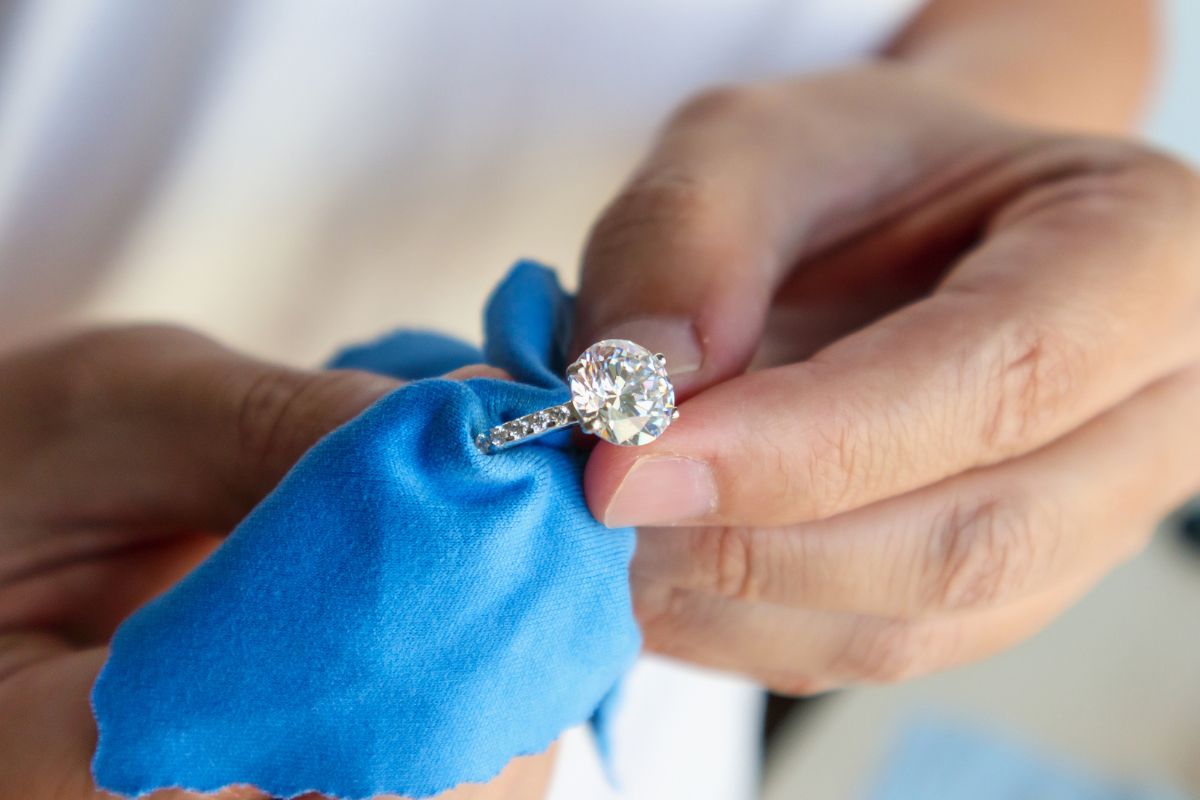
Taking care of your diamond ensures it remains polished, its brilliance unmarred, and its value intact. Here are essential maintenance tips:
Regular Cleaning:
- Use a gentle solution of soap and warm water to remove everyday dirt. Soak your diamond for 20-30 minutes.
- Gently brush it with a soft toothbrush, especially around the back of the diamond which collects the most oil and dirt.
- Rinse under warm running water; avoid the sink drain.
Annual Check-ups:
- Just like any valuable investment, take your diamonds to a trusted jeweler for an annual check-up to inspect the prongs and settings. This will ensure that your diamond isn't loose and prevent potential loss.
Avoid Chemical Exposure:
- Exposure to harsh chemicals can dull the color and overall luster of your diamond. It's key to remove your diamond jewelry during household chores or when using harsh chemicals.
Storage:
- Store your diamonds separately from other jewelry to avoid scratches. Soft cloth pouches or lined jewelry boxes are ideal.
Handle With Care:
- Touch your diamond sparingly, as the oils from your skin can affect its shine. When handling, try to hold it by the edges or its setting rather than the polished surface.
By addressing these points, your diamond's sizes and colors will be preserved, making sure it looks as stunning as the day you got it.
Frequently Asked Questions
Diamonds are highly valued for a variety of reasons, from their unique physical properties to their cultural and sentimental significance. Below, you'll find specific answers to common questions regarding the factors that contribute to a diamond's value.
What factors contribute to the high cost of diamonds?
The high cost of diamonds is attributed to their scarcity, the expensive and extensive mining process, and the demand in jewelry markets. Additionally, the expertise required to cut and polish a diamond adds to its overall cost.
What are the primary uses of diamonds beyond jewelry?
Beyond adorning jewelry, diamonds are used in industrial applications due to their extraordinary hardness. They are crucial in cutting, grinding, and drilling tools, as well as in high-precision scientific equipment.
How do the 'Four Cs' (Carat, Color, Clarity, and Cut) affect a diamond's value?
Each of the 'Four Cs' influences a diamond's value significantly: Carat denotes the weight, Color assesses its hue, Clarity measures the presence of inclusions or blemishes, and Cut determines its brilliance through the quality of its faceting.
In what ways does the rarity of diamonds influence their market price?
Diamonds that are rare in color or of high clarity grades are less commonly found, making them more sought-after. This rarity drives up their desirability and market price, as they are considered more unique and valuable.
What characteristics distinguish one diamond as being more valuable than another?
A diamond that boasts exceptional clarity, a colorless appearance, a higher carat weight, and a precise Cut will typically be considered more valuable. The interplay of the 'Four Cs' ultimately determines a diamond's overall worth.
How does diamond's composition and structure relate to its high valuation?
The composition and crystal structure of diamonds contribute to their unmatched hardness and refractive properties, which are highly prized. These characteristics not only make them durable but also give them the brilliant sparkle that is aesthetically valuable.
Checkout some of our top collections:
Leave a comment
Please note, comments must be approved before they are published.
